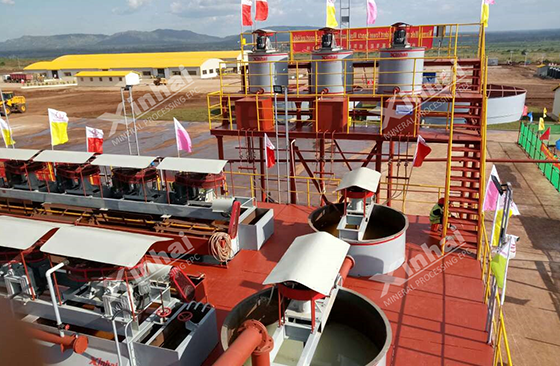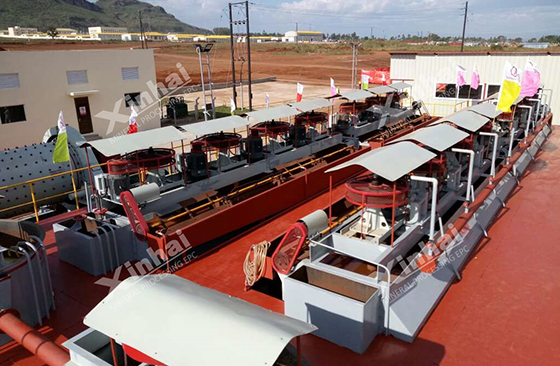Phosphorus is widely used in industrial sectors such as national defense, aerospace, aviation, chemicals, food and fertilizers, mainly in the phosphate fertilizer industry. With the rapid growth of demand for phosphate fertilizers at home and abroad in recent years, the world is faced with the problem of few rich ores and many poor ores; there are few sedimentary metamorphic phosphate rocks that are easy to select, and there are many reserves of phosphorus block rocks that are difficult to select. Therefore, strengthening research on phosphate ore beneficiation technology and rational development and utilization of phosphate ore are of great significance to economic development. Scrubbing and desliming, gravity separation, flotation, gravity-magnetic flotation combined process and roasting-digestion process are all traditional beneficiation methods of phosphate rock. Let’s take a look at the traditional phosphate ore beneficiation process.
Use the table of contents below to navigate through the guide:
01Phosphate ore scrubbing and desliming process

The scrubbing and desliming process is mainly used in ores with a high degree of weathering. As the degree of weathering deepens, a large amount of carbonate minerals in the ore are lost, while minerals such as phosphates and silicates are relatively enriched. The scrubbing and desliming process has the advantages of simple process and easy operation. However, production practice shows that the scrubbing and desliming process is limited in improving the grade of P2O5 in phosphate concentrates, and the large amount of scrubbing tailings produced in the process cannot be comprehensively utilized. When the scrubbing desliming-flotation process is used to treat ores with a high degree of weathering, the subsequent process needs to set up a flotation operation to recover the phosphorus in the scrubbing tailings.
02Phosphate ore gravity separation process
Gravity separation mainly selects ores based on the density difference between different minerals. Phosphate rocks include calcite, dolomite, quartz and other gangues. The specific gravity of these minerals is similar to that of apatite. In mineral processing practice, heavy media separation is mainly used. However, the fine-grained part of phosphate rock cannot be recovered by heavy media beneficiation method, and it needs to be supplemented by flotation method.

03Phosphate ore flotation process
Flotation, as the main method of phosphate ore beneficiation, is suitable for processing complex ores that are difficult to be separated. The phosphate rock flotation process flow is as follows:
1. The positive flotation process can remove siliceous gangue in the ore, so the positive flotation process is used for siliceous phosphate rock and sedimentary metamorphic silica-calcic apatite, and the separation effect is better;
2. A single reverse flotation process can remove calcium (magnesium)-containing gangue. Sedimentary calcium (magnesium) phosphate rock has better performance using this process. Low-silicon and high-magnesium phosphate rock can also be used in a single reverse flotation process. Anti-flotation;
3. Forward and reverse (reverse and forward) flotation and double reverse flotation can remove silicate minerals and carbonate minerals to enrich phosphorus minerals. It is difficult to select sedimentary calcium silicate (magnesium) phosphate rock. This can be done in two ways.
(1) The forward and reverse flotation process has strong adaptability and can adapt to and process high-silicon and high-magnesium phosphate rock ores containing P2O515-26%, MgO1-6%, and SiO212-30%;
(2) Double reverse flotation is suitable for processing low silicon and high magnesium phosphate rock. This process has the advantages of flotation at room temperature, and the coarser particle size of the product in the tank is beneficial to subsequent processing of the product. The desiliconization efficiency of double reverse flotation is low. In order to meet the industrial demand of phosphate ore, the silicon content in the raw ore is required to be no more than 14%.

04Phosphate ore gravity-magnetic-flotation combined process
The combined process of gravity and magnetic flotation is used to recover the associated useful minerals in phosphate rock. The phosphate rock in the alkaline complex is a magnetite-type magmatic late-stage accumulation deposit, and the main useful minerals are fluoroapatite and magnetite. During mineral processing, phosphorus is prioritized for flotation, and then magnetic separation technology is used to recover iron. The flotation+weak magnetic separation and gravity separation + strong magnetic separation processes can also recover effective minerals such as apatite, magnetite and ilmenite in the ore.
05Phosphate rock roasting and digestion process
The roasting method is used industrially to treat phosphate rock ores, especially those with large amounts of calcium-containing gangue. This method can completely remove carbonates. The essence of the process is to thermally decompose carbonate, and the precipitated carbon dioxide produces solid products such as lime and periclase. The desliming and classification process can discharge carbonate minerals and thereby increase the P2O5 content of the ore.

In recent years, new phosphate ore beneficiation methods have also emerged, such as microbial treatment, dry electric separation, magnetic cover method and selective flocculation process. Choosing appropriate beneficiation methods according to different ores can improve the beneficiation efficiency and concentrate recovery rate. Xinhai Mining can customize the design of phosphate mineral processing solutions and production equipment according to customer needs, and provide customers with the EPC+M+O service . Welcome to consult.


 marketing@ytxinhai.com
marketing@ytxinhai.com  0086 13810327080
0086 13810327080 






































































































 CHAT
CHAT MESSAGE
MESSAGE




